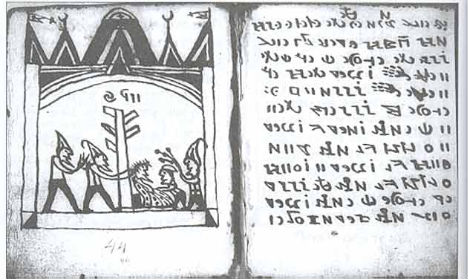

In Japan, several thousand Chinese characters were integrated with two sets of indigenous syllabic signs during the first five centuries ad to make one prestigious writing system. When the former Chinese leader Mao Zedong, himself a calligrapher, proposed to romanize the Chinese script in the 1950s to educate the masses, he was forced by the literati to compromise with the introduction of a simplified character script and a parallel romanized phonetic system known as Pinyin. The classical Chinese script enjoys high respect because of its antiquity - it is descended from the recognizable characters inscribed on 'oracle bones' of the Shang civilization from 1200 bc - and because of its imperial and artistic associations. One wonders whether China's enduring political unity may partly account for the longevity of Chinese characters, a subject that is somewhat neglected by the book. These changes together fossilized the hieroglyphs.

The spread of Christianity gave rise to the Egyptian Coptic Church, which wrote in Coptic script, and in the seventh century ad, Egypt was conquered by Arabs writing in the Arabic script of Islam. After the death of Cleopatra in 30 bc, Egypt became a province of the Roman Empire, which wrote in Latin script. Instead, the hieroglyphs were slowly marginalized by a flux of politics, language, script and religion. However, unlike in Turkey, the Egyptian script was not abolished. Pharaonic Egypt was conquered in the fourth century bc by Alexander the Great and was ruled by the Greek-speaking Ptolemy dynasty, which used an alphabet - hence the inscription of the Greek alphabet on the Rosetta Stone in 196 bc along with the hieroglyphs. Although separated widely in time, these Egyptian and Turkish script disappearances share a common element: a seismic shift in political power and cultural prestige that caused the adoption of a new writing system.


 0 kommentar(er)
0 kommentar(er)
